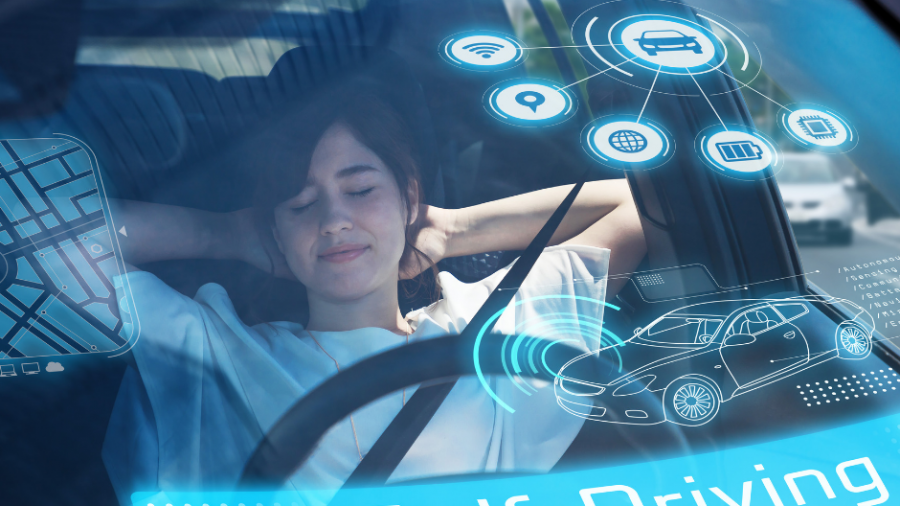In the old days people used to joke about backseat drivers telling them how to drive. Now the joke’s on us as the vehicle itself starts taking over. Even so, while these autonomous technologies may give drivers a sense of security, they still aren’t reliable enough to use without a driver. This will raise the new problem of just who is driving.
Levels two or three
Not all autonomous vehicles are alike. On a five-point scale, the development of autonomous vehicles is currently sitting around levels 2-3:
- Level 2 is where the driver must still carry out important driving tasks
- Level 3 is conditional automation: the vehicle does the driving but can ask the human to intervene.
The problem with level 3 conditional automation is the driver can’t afford to relax completely. There’s a risk they will get bored and fall asleep, just when they need to take over. In handover experiments, the quickest response time for a driver to take over was 1.08 seconds. But it can be as much as 2.5 seconds – just long enough to cause an accident.
To avoid this thorny problem of who is driving, some manufacturers have said they want to leap from level 2 to level 4. Level 4 is full automation and almost entirely without the need for a human to intervene.
Staying vigilant
The driver of a conventional car must remain vigilant all the time. This is actually much easier than staying vigilant when driving is just a secondary task.
Experiments found the more time someone spends just being driven, the less likely they are to respond to automation failure. In fact, participants detected 30% fewer hazards at the end of their drive than they did at the start. They also had trouble taking control of the autonomous vehicle in an emergency.
It is all very well having sensors to spot when the driver needs to take over. But how can they be sure the driver is ready to take over? They may be bored, daydreaming or in danger of falling asleep.
Falling asleep
Falling asleep at the wheel of a conventional car is not uncommon – 20% of Australians admit to it. But if the driver has nothing to do for long periods of time, it’s even more likely. Truck drivers, for example, spend long periods at the wheel – what would they do if the truck were driving itself most of the time?
Automated vehicles would need the ability to pull to the side of the road and stop without depending on a human. If sensors on the vehicle spotted the driver was sleepy or drunk, they could even prompt the vehicle to take 100% control. Or they could talk to the driver to keep them awake and ask them to carry out certain tasks.
Safety drivers employed to test autonomous vehicles offer early examples of how people might behave. Researchers found:
- They can become complacent and lose awareness because of routine and boredom
- Having a second person in the vehicle helps them maintain focus
- They do not fully monitor the system in the middle of the night
- While drivers have a phone for emergencies, it can also be a distraction.
There is no reason to think other people would be more vigilant when travelling in an autonomous vehicle.
Being driven in a vehicle that is not fully autonomous – less than level 5 – is not such a carefree experience. It may be stressful or just very boring. People who are bored experience the same levels of fatigue as someone making an effort, but bored people become even more tired with time.
So less than fully autonomous vehicles may not address the problem of fatigue on the roads.
Future of insurance
So far, insurance laws are lagging well behind autonomous vehicle development. One expert even proposed a registration levy to fund a no-fault scheme to cover accidents involving these vehicles. This is ironic, considering proponents of autonomous technology claim the whole reason for it is to completely prevent accidents!
Clearly there are still a lot of optimists in this fledgling industry. Until then, you still need to know who is driving, hold the wheel and buy a green slip.


your opinion matters: